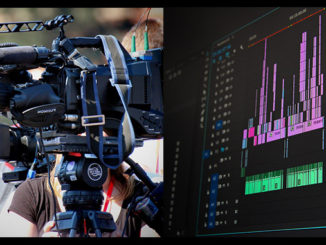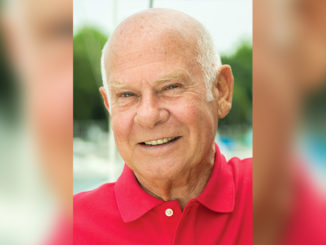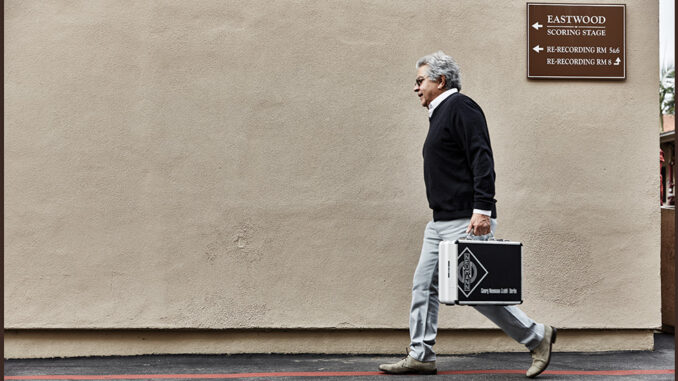
by Mel Lambert • portraits by Chirstopher Fragapane
Robert “Bobby” Fernandez was never in any doubt about what he wanted to be while growing up. “My mother used to take me every week to see a movie in downtown Los Angeles,” he recalls. “I loved to hear film music in those large, historic theatres, the Warner Theatre and the Los Angeles. I always wanted to be a scoring mixer — even before I understood the job. And even though I play a little guitar and bass, I never considered myself to be a musician. I just love being involved with the capturing of movie music. I love film; it’s my passion!”
His opportunity to follow his muse came in the early 1970s, when a close friend took him onto the Warner Bros. lot in Burbank and got him a job in the mailroom. “I then met Al Green, who at the time was head of the studio’s sound department, and he agreed to try me out,” Fernandez says. “I had been studying sound in my spare time — at that point I was a layout engineer at Ralph M. Parsons Company, working on petrochemical plant design — and had watched the crew working on a dub stage. So Al asked me, ‘What do you want to do here?’ I just told him straight: ‘I want to record music for motion pictures.’ ‘I can make that happen,’ he replied. ‘But you have to learn as much as possible about that job…and I’ll be holding quizzes!’ That was my start.”
And so Fernandez watched, listened and asked questions. Then came a surprise. “I soon learned the meaning of the word ‘hiatus,’” he explains. “So, during that first three-month summer break,” he says, “I read every audio book I could find and hung out with a couple of friends working in recording studios. When I came back, I took on every crappy job in the sound department I could find, including loading film magazines, coiling cables and other chores. When summer came around again, Al found me other jobs over hiatus. ‘You’re the only guy on my crew who can handle everything,’ he said. And he kept me on.”

Photo by Christopher Fragapane
It’s a career decision that paid off. The recent score for Clint Eastwood’s The 15:17 to Paris (2018) — a Warner Bros. film about three Americans who thwart a terrorist attack on a Paris-bound Thalys train that was released on February 9 — marks Fernandez’s 35th outing with the actor/director. The only exception was Mystic River (2003), the score for which was recorded in Boston.
“Clint surrounds himself with people who are good at what they do,” Fernandez confides. “While I never assume that I will get his next film, you couldn’t ask for a better working environment. He is on the stage from the start to the end of a scoring session, and is deeply concerned with the sound he wants to hear. And it’s great to be dealing with just one person and not a committee.”
The director was looking for a minimalist score for music on The 15:17 to Paris. “We had just piano, strings, light percussion and a synth pad,” reveals Fernandez. “Clint puts music where he feels it is right for the film, and only where it is needed. He worked very closely on the score with composer Christian Jacob.”
For The 15:17 to Paris score, Fernandez recorded an orchestra made up of 22 violins, eight violas, six celli and four basses, together with harp, percussion, guitar and a piano, the latter played by the composer. “There were some additional synth elements that were stemmed out high and low to give the dub stage some extra flexibility to raise or lower the tracks as needed in the final mix,” he explains. “Both the 5.1-channel orchestral and synth stems provided another level of tension and dramatic effect to the picture, particularly during the film’s train attack. There were also Fender Rhodes piano parts added to some of the cues.”
The orchestra was set up within the Eastwood Scoring Stage in a traditional layout, with violins on the left, violas center, celli and basses on the right. “The piano was set up in the middle of the room behind the violas,” the scoring mixer continues. “Placing the piano in this position gave me a more focused and natural sounding pickup with the Decca Tree and outrigger mics. It also allowed me to bring in and spread the piano spot mics for more width and detail without the worry of any phase issues. To the left of the piano was the harp, and to the right was a setup for the rhythm bass, which was only used on the source cues.
“For this score, I wanted a very warm sound that could be aggressive when it needed to be,” he continues. “I didn’t want any odd-order harmonic distortion when things got loud. The even-harmonic distortion of tube mics was the sound I wanted for the score.”
Fernandez recorded his tracks into Avid Pro Tools. “I then mixed the score on the Warner Bros. scoring stage with its 96-channel Neve 88RS analog console,” he says. “It’s my favorite console and control room. When mixing in the box, I’ll use a combination of both hardware and plug-in reverbs; the latter give me access to reverb programs and devices to which I normally wouldn’t have access. When mixing on an analog console, I prefer to use hardware reverbs; my go-to is the TC M6000 — I love the sound of the unit and surround programs.”
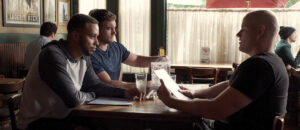
Warner Bros.
The final dub-stage delivery for The 15:17 to Paris was 48 kHz/24-bit Pro Tools tracks. “I developed a 5.1-channel orchestral mix, plus a 5.0 piano stem played by the composer, which I spread out for a bigger-sounding mix,” he elaborates. “I also had a 5.1 synth pad and a 5.1 atmosphere source cue for a scene in a remote village filled with ethnic music to set up a live ambience. The 0.1 or LFE track gives the cue a powerful cinematic low end.”
The scoring mixer’s association with the director dates from Bronco Billy (1980) and composer Steve Dorff. “For the score to The Bridges of Madison County [1995], my first call came from picture editor Joel Cox, who was working with the director on early ideas for the musical score,” he recalls. “Clint is an accomplished pianist. He came onto the scoring stage with a piano facing the screen and worked out ideas that keyboard player Mike Lang then recorded for the score; the three of them were on the stage finalizing Clint’s ideas. [Eastwood’s longtime collaborator, the late] Composer Lennie Niehaus then added strings” to heighten dramatic scenes.
Fernandez received a Primetime Emmy Award nomination in 1993 for Sinatra, together with four Cinema Audio Society Award nominations — including the Eastwood films American Sniper (2014) and Sully (2016) — and 10 MPSE Golden Reel Award nominations. He was also honored with two Grammy Awards in 2005 for his work on Ray Charles’ album, Genius Loves Company (2004).
Having served as the staff scoring mixer at Warner Bros. Studios before becoming an independent mixer several years ago, Fernandez freely concedes that his favorite room is the Eastwood Scoring Stage on the studio’s Burbank lot. “But I have also worked successfully on the Sony and the Fox scoring stages,” he says. “I look for a great production crew, together with a space that will give me a flexible sound; the moveable screens on the Eastwood Stage are great for modifying the reverb time and ambience character.”
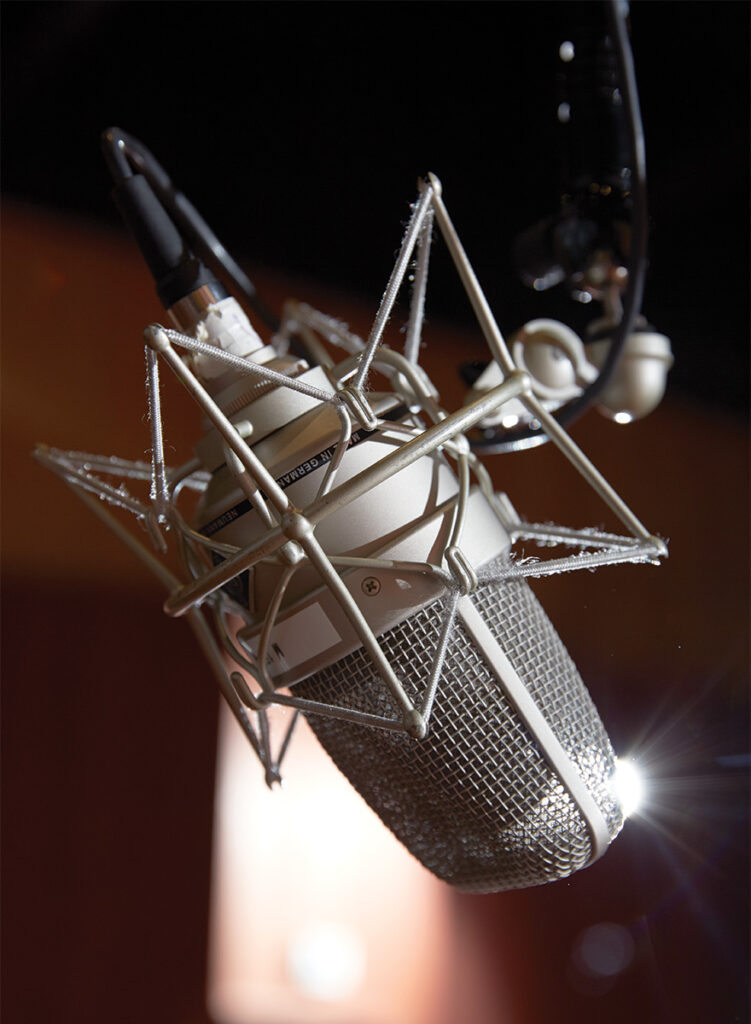
The scoring mixer’s go-to mic array is a classic Decca Tree consisting of a central array of three omni mics over the conductor’s podium, with two outriders on tall stands either side of the ensemble.
“I use a Decca Tree layout pretty much all the time, even for smaller combos,” he explains. “The director might ask me to stem off one of the Decca Tree mixes if he is looking for a different sound, but is unsure if it will work later.”
Fernandez will also have spot microphones to cover key instruments. “The Eastwood Stage boasts a fine collection of two dozen vintage Neumann U67 tube microphones,” Fernandez attests, “which I like to use on violins, violas and cellos. I also use a variety of Schoeps condenser mics.”
Looking back on his big career break in 1972, the scoring mixer said it came as something of a surprise. “I was called into Al Green’s office at 8:00 a.m. and told to go down to the main scoring stage and work with Dan Wallin,” he remembers. “‘Learn everything you can,’ Al told me, adding jokingly, ‘But don’t tell Dan that I think he’s a good mixer, because he already has a big head. And Danny probably won’t like you!’ But Dan and I hit it off straight away and got on fine.”
Fernandez was originally confined to the live space — eventually being named stage manager — but soon gained access to the control room. “Dan wanted me to fully understand how to set up for a scoring session, so I learned about all the microphones he used and how they worked,” he says. “He was okay with all my questions. ‘That’s the only way you are going to learn,’ he reasoned. He was very open and giving during that time, explaining everything to me. Once I had mastered the session setup — ‘You’ve got it!’ he would tell me — Dan brought me into the control room. So I then started to take careful notes of all the EQ and filter settings he was using, and would set up the console each morning to match the mics he had put out on the session setup lists.”
Back in the mid-1970s, the scoring mixer recalls that Wallin preferred to print a “three- or six-channel live mix of the orchestral session; ‘fix it in the mix is bullshit,’ he thought. But we did add Ampex analog 16-track decks, then a pair of 24-track Studers and eventually 32-track Mitsubishi X-800/X-850 digital machines. However, we soon ran out of console inputs and outputs with so many backup tracks available for remix!”
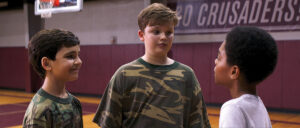
Warner Bros.
His first mix date came about via a circuitous route. “After four years on the stage as stage manager, I was called into Al’s office and told that Danny wanted me to start mixing, but that I first needed to work for a year on a dub stage to learn what’s expected of a scoring mixer. I started the next day at 7:00 a.m. on Warner’s Dub Stage 1 with gaffer Walter Goss, Mike Jerome handling sound effects and me on music. I asked Walter if we were starting our training at 9:00 a.m. ‘Training, what training?’ he queried. ‘Universal Studios has booked this stage for a year; at 9:00 a.m. we’re dubbing!’ Walter’s first request to me was, ‘When I call for a square hole, make one in the music for the dialogue.’ That was my baptism by fire!”
Eight months later, Fernandez ended up working on Hard Core (1979) with director Paul Schrader. “Composer Jack Nitzsche needed help, I was told. Apparently, Jack wasn’t happy with what was occurring on the scoring stage and wanted a ‘rock ‘n’ roller.’ At the time, I had long hair and maybe looked the part, so the sound department had me go see what I could do to calm tempers. Jack and I got along great and the film turned out well — although I got a credit as a re-recording mixer and not the scoring mixer. In those days, it was Warner policy to omit mention of the scoring mixer. Go figure.”
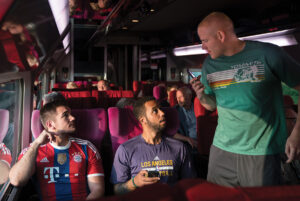
Warner Bros.
Other landmark scoring sessions with Eastwood include the aforementioned Sully and American Sniper, as well as Jersey Boys (2014). “The score for Sully was very different, with the Tierney Sutton Band that we recorded at Cow on the Wall Studios in North Hollywood for a couple of days,” Fernandez recalls. “We then went back to Warner’s to record the orchestra and mix the score. Clint recorded his early ideas that were then used for the score.”
Jersey Boys was also different, according to Fernandez. “Clint wanted the music of the Four Seasons to sound true-to-life and not over-produced,” he says. “We went to The Bridge in Glendale to record the songs with four vocalists and the band, then back to the Eastwood Stage to add the underscore and mix the film.”
The music for American Sniper by composer Joseph DeBeasi involved a synthesizer and orchestral elements, the scoring mixer relates. “For the first pass, we also had four percussionists with three drum kits [facing the screen] across the width of the scoring stage,” he explains. “For the second pass, they played large drums and taikos that Clint cued to follow the on-screen action. He also played several piano pieces, including ‘Taya’s Theme,’ which he wrote.”
Most recently, Fernandez recorded and mixed the score for The Bombing, a new Chinese World War II film directed by Xiao Feng with music by Liguang Wang, due in May. “Tao Liu, the score producer, and I met while he was enrolled in the USC Thornton Screen Scoring program, with supervisor Dan Carlin, Jr., the school’s program director. After the course ended, Tao Liu asked me if I would record and mix the music for The Bombing; the producers were looking for a ‘Hollywood brand’ on the film. Originally, we had planned to use the Eastwood Stage but, because of time conflicts, we had to move to Abbey Road Studios in London, where we worked for two weeks with the London Symphony Orchestra and conductor Gavin Sutherland.”
Summarizing his many decades as a first-call scoring mixer working on a large number of landmark films, Fernandez offers a simple overarching philosophy: “There is a hierarchy during the process. The mixer works for the composer and his creative team; the composer, in turn, works for the director. We all need to remain focused on the job at hand, and get on with the work as part of a collaborative team.”




